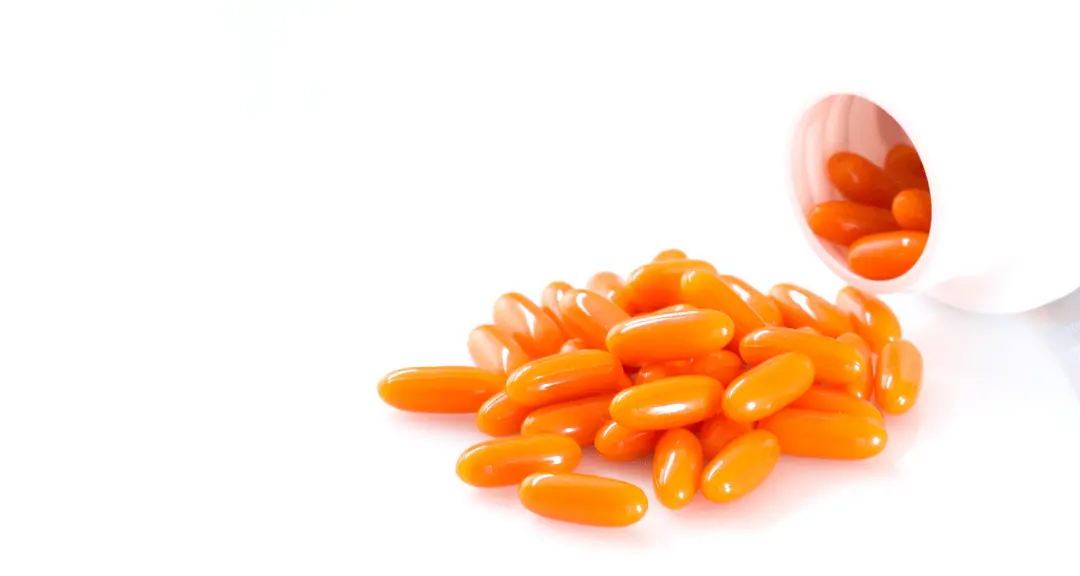Coenzyme Q10, also known as ubiquinone, functions as a coenzyme present in most bacteria and animals. Taking it as a supplement enhances energy production. Ubiquinone and ubiquinol, the two forms of CoQ10, offer distinct benefits and applications.
CoQ10 levels fall with age. This is one of the reasons supplementation has become increasingly popular. CoQ10 has been used with success in improving fatigue symptoms in several patient populations, including those with fibromyalgia and statin-related fatigue.
Read more to find which form of CoQ10 works best for your lifestyle!
Aside from energy production, Coenzyme Q10 (CoQ10) has a plethora of benefits including a reduced risk of certain cancers, anti-aging, and improved exercise performance. [1]
CoQ10 plays a key role in oxidative phosphorylation by accepting electrons from reducing agents. CoQ10 contributes to the transfer of H+ protons, forming a proton gradient.[2]
CoQ10’s Role in ATP Formation and Mitochondrial Protection: Understanding Its Forms and Functions
When protons flow back into the inside of the mitochondria, they release energy to form adenosine triphosphate (ATP). ATP, the primary carrier of energy in cells, fuels numerous cellular processes.[3] CoQ10 can prevent the production of free radicals and reactive oxidative species (ROS). Reactive oxidative species are reactive chemicals that are formed from oxygen.[4] Some examples include peroxide, superoxide, and hydroxyl radicals.
CoQ10 has two forms, ubiquinol and ubiquinone. In the blood, ubiquinol is the recommended form for supplements. Ubiquinone represents the fully oxidized form of CoQ10, meaning it lacks the H+ ion. [5] Ubiquinol is fully reduced which means it has the H+ ion. Ubisemiquinone or semiquinone is a free radical intermediate between ubiquinol and ubiquinone. [5], ubiquinol is milky white while ubiquinone is yellowish.
Ubiquinol vs. Ubiquinone: Cost, Stability, and Efficacy in Cardiovascular Health
Ubiquinol is more expensive than ubiquinone and is less chemically stable. Interestingly, in two studies of Q-SYMBIO and KISEL-10 on cardiovascular disease, ubiquinone was more effective than ubiquinol. After receiving 3 × 100 mg/day for 2 years, there was a 42% reduction in both cardiac related deaths compared to the control group.[6]
In another study, ubiquinol was a better supplemental form to enhance CoQ10 levels than ubiquinone in older men. However, both of the supplements have relatively similar efficacies because certain cells can convert ubiquinone to ubiquinol.

A general dosage of CoQ10 should be about 30-90mg a day. [7]
Ubquinol’s superior bioavailability is a myth. This belief, widely disseminated on the Internet, seems in part to have originated from a misleading comparison between bioavailability data from studies by Shults et al. in 1998 [5] and Hosoe et al. in 2007 [5]. The older study involved the use of a dry powdered crystalline form of ubiquinone, which is poorly absorbed (but was the only formulation available at the time).
Exploring Ubiquinol Absorption: An Unaddressed Aspect in Test Studies
Thus, it did not test the ubiquinol absorption results against a formulation of ubiquinone dissolved in appropriate carrier oils. Carrier oils generally come from plants and are used to transport certain vitamins and nutrients such as CoQ10. Some examples include jojoba, almond, coconut, and grapeseed oil.
Some oils are better at transporting nutrients than others.

The carrier can make a tremendous difference in the effectiveness of the nutrient. [8] The two studies being compared were conducted more than 10 years apart. They used different study subjects: healthy volunteers vs. patients with Parkinson’s, different investigators, different analytical labs, and different protocols.
CoQ10 is versatile and promising. Always make sure to consult a qualified physician before adding supplements.
References and Suggested Reading
Barcelos, Isabella Peixoto de, and Richard H. Haas. “CoQ10 and aging.” Biology 8.2 (2019): 28.
Chan, Sook Wah, et al. “Stability of CoQ10-loaded oil-in-water (O/W) emulsion: effect of carrier oil and emulsifier type.” Food biophysics 8.4 (2013): 273-281.
Hernández-Camacho, Juan D., et al. “Coenzyme Q10 supplementation in aging and disease.” Frontiers in physiology 9 (2018): 44.
Hidalgo-Gutiérrez, Agustín, et al. “Metabolic targets of coenzyme Q10 in mitochondria.” Antioxidants 10.4 (2021): 520.
Mantle, David, and Alex Dybring. “Bioavailability of coenzyme Q10: An overview of the absorption process and subsequent metabolism.” Antioxidants 9.5 (2020): 386.
Mantle, David, and Iain Hargreaves. “Coenzyme Q10 and degenerative disorders affecting longevity: an overview.” Antioxidants 8.2 (2019): 44.
Mehrabani, Sanaz, et al. “Effect of coenzyme Q10 supplementation on fatigue: A systematic review of interventional studies.” Complementary Therapies in Medicine 43 (2019): 181-187.
Maes, Michael, et al. “Coenzyme Q10 deficiency in myalgic encephalomyelitis/chronic fatigue syndrome (ME/CFS) is related to fatigue, autonomic and neurocognitive symptoms and is another risk factor explaining the early mortality in ME/CFS due to cardiovascular disorder.” Neuro endocrinology letters 30.4 (2009): 470-476.


